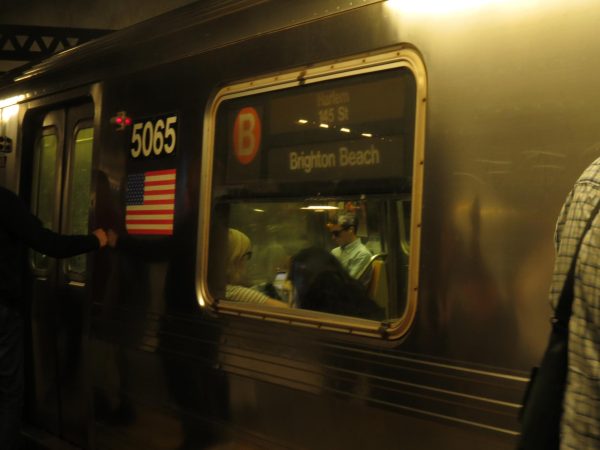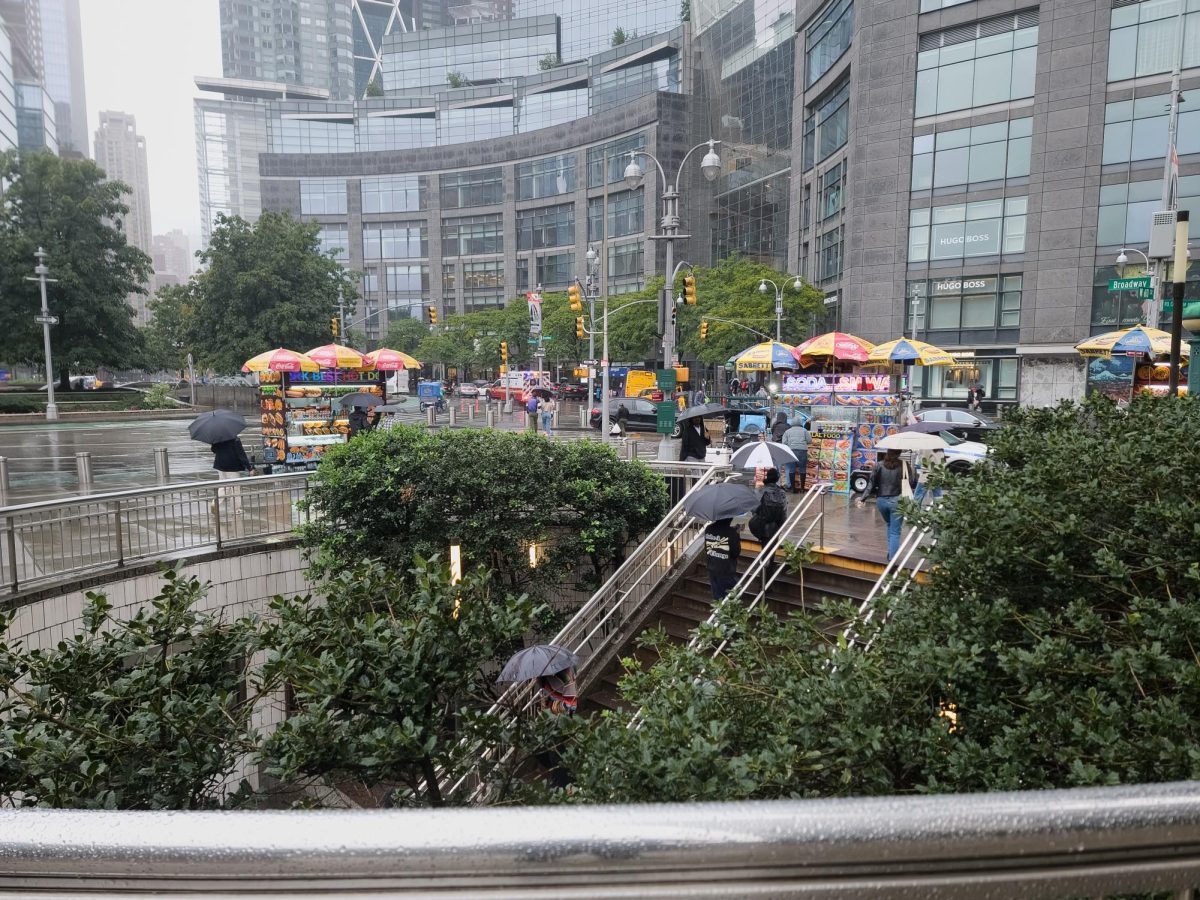The subway is an aspect of many commuters’ lives that often goes unnoticed and becomes a mere item on a checklist — a reflection that I experience as well.
After considering the miles I have traveled since starting college, however, I began to acknowledge that the New York City subway system has shaped some of my most pivotal and noteworthy experiences. Had it not been for this vital mode of transportation, I might have never found my independence and place in this bustling metropolis.
The New York City subway stations deserve recognition, even if an individual may only be riding the subway for a few stops. The 59th Street-Columbus Circle station holds a special place in my heart and is frequented by members of the Fordham community and New Yorkers daily — it is a stalwart that has served New Yorkers for over a century.
Located a block from Central Park South and at Columbus Circle, the 59th Street station boasts an impressive annual ridership. In 2019, it claimed the eighth spot on the list of the most-used stations in the city, with an astounding tally of 23 million boardings — a testament to the station’s accessibility and prevalence.
Notably, the station operates around the clock. The 1, A and D trains provide nonstop service, the B train is in service during weekdays until 11:00 p.m., the C train operates at all times except late nights, and the 2 train runs only from 12 a.m. to 6 a.m.
Multiple entrances and exits from the street level further enhance passengers’ convenience of accessing the station almost directly where their train is operating. And, as if that weren’t enough, the Underground Market — a vibrant marketplace offering several eateries, pop-ups and retail stores — thrives right beneath Columbus Circle and does not require a fare payment to enter.
As a former resident at Fordham Lincoln Center (FLC), the 59th Street-Columbus Circle station became my lifeline to New York City. I vividly recall relying on the station during my first year — a stark contrast to my quiet, small-town life in Skaneateles, New York, where driving is the foremost method of transportation.
Had I not taken that D train by myself, I would not have become comfortable exploring the city.
I can still feel the excitement of arriving in the city for the first time and aching to embark on my coming-of-age story in the metropolis — to watch it unfold as I wandered from one borough to another, a camera in my hand, AirPods blasting a playlist I had spent hours perfecting.
What I hadn’t anticipated, however, was an initial fear of New York City’s intricate subway system — a daunting prospect for someone unaccustomed to the hustle of the metropolis and possessing the worst navigation skills known to humankind. I remember walking into the 59th Street-Columbus Circle station for the first time with my friends and vowing never to step in alone. The crowded platforms, stifling heat and maze-like layout overwhelmed me.
I was dispirited when I realized that to embrace my college experience, I had to, first and foremost, step into the smelly and intolerably hot subway. Odor aside, if I was to ride with New York City transit every single time I walked anywhere more than 30 minutes from campus, it would end up costing me (and other college students) a kidney in the process.
My relationship with the subway took a few months to transform, the turning point being a gloomy winter morning when I summoned the courage to embark on my first solo train ride. Armed with newfound spirit, I walked from FLC to Columbus Circle instead of relying on friends or choosing to stroll a brutal 35 minutes in the cold to Bryant Park.
Upon arriving at the station, I was enveloped by the distinctively dreadful smell of the subway and the thick air hanging over me. I cursed myself for not walking to Bryant Park at 42nd Street. “It was just a few streets,” I kept trying to convince myself. My abysmal perspective toward the subway continued to loom over me even after I got on the D train, where I clutched the bar holding on for dear life.

I closed my eyes and my hands started shaking. If you saw me on that train, chances are you would have compared me to a kindergartner clinging to their parents, begging not to let go, fearful of the monsters awaiting me on the path ahead.
As I felt the steady rhythm of the tracks beneath my feet, however, my body stopped shivering, and my anxiety gradually subsided. With my hands still clinging to the bar, I realized, for the first time, how much of the subway had escaped my notice: the amusing advertisements on the trains, the passengers engrossed in their own lives and the enriching sense of courage that engulfs an individual after successfully navigating the system.
Amid the sweltering atmosphere, something inexplicably comforting washed over me. I realized that I was merging into a stream of strangers with whom I shared an experience that transcended our individual lives — catching a train that led us to our respective destinations. The subway was not as daunting as I had made it out to be; at the end of the day, it was just an atlas of trains that made sense once I got accustomed to it.
The Columbus Circle station was where my coming-of-age narrative began, and it is a symbol of my independence. Had I not taken that D train by myself, I would not have become comfortable exploring the city. To my first-year brain, if I could navigate the unfriendly subway system, I could weather any storm thrown at me — whether professional, academic or other aspects of my life.
The New York City subway stations deserve recognition, even if an individual may only be riding the subway for a few stops.
My initial apprehension shortly developed into a preference for the subway over any other mode of public transport. It is, after all, comparably faster, less expensive and relatively straightforward to navigate.
Courtesy of the trains I caught at Columbus Circle, I was also able to fully immerse myself in the dazzling tapestry of New York City. I memorized paintings at the Metropolitan Museum of Art, felt the breeze in my hair atop the Empire State Building, sprinted through the Brooklyn Bridge, and explored different neighborhoods and hidden gems of New York City.
What had once been an uncomfortable aspect of the city soon became a crucial and indispensable part of my daily routine — the 59th Street-Columbus Circle station. The station’s strategic location elevates it as one of my favorites; not only does it provide access to the Upper West Side, Hell’s Kitchen and Midtown Manhattan, but it also brings travelers in close proximity to breathtaking views of quintessential New York City staples and landmarks, including the picturesque Central Park.
As my lifestyle formed around the subway, every station melded into a familiar backdrop, a casual love affair between the trains and their passengers. Yet, the Columbus Circle station remained etched in my memory. When I am home in Skaneateles for the holidays and the nostalgia for public transport comes running toward me, I recall the scent of fresh pretzels from the Underground Market and the symphony of arriving trains, loud enough to muffle and drown out my faintest thoughts.
Mostly, when I think of the Columbus Circle station, I reminisce about the places it has transported me to, the silly photos my friends and I have taken while waiting for the trains, and the Taylor Swift songs I blast on full volume on rides that make me realize that I actually live in the city I have dreamt about and romanticized my entire life.
When I think of the subway system, particularly the 59th Street-Columbus Circle station, I no longer see it just as a means of transportation. It is a part of my personal history, a symbol of my growth and independence and a reminder of my many adventures in the city. For anyone who gallivants to this station by accident or by design, I hope it offers you adventure and convenience and marks the start of your cinematic coming of age, just as it did for me.


